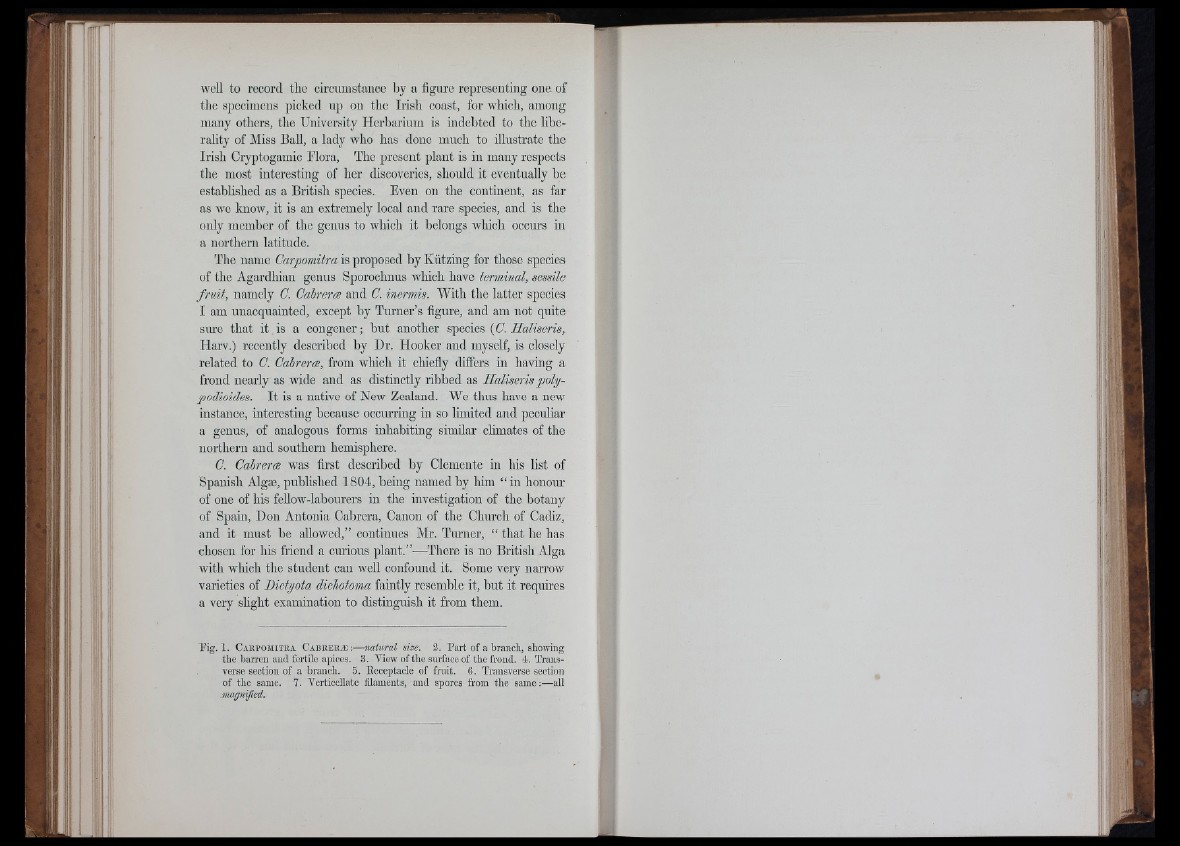
well to record tlie circvimstaiice by a figure representing one of
the specimens picked up on the Irisli coast, for whicli, among
many others, the University Herbarium is indebted to the liberality
of Miss Ball, a lady who has done mucli to illustrate the
Irisli Cryptogamic Elora, The present plant is in many respects
the most iiiterestiiig of her discoveries, should it eventually be
established as a Britisli species. Even on the continent, as far
as we know, it is an extremely local and rare species, and is the
only member of the genus to which it belongs which occiu’s in
a northern latitude.
The name Carpomitra is proposed by Kiitzing for those species
of the Agardhian genus Sporochnus which have terminal, sessile
fruit, namely C. Cabrera and C. inermis. With the latter species
I am unacquainted, except by Turner’s figure, and am not quite
sure that it is a congener; but another species {C. Haliseris,
Harv.) recently described by Dr. Hooker and myself, is closely
related to C. Cabrera, from wliicli it chiefly differs in having a
frond nearly as wide and as distinctly ribbed as Haliseris poly-
podioides. It is a native of New Zealand. We thus have a new
instance, interesting because occm'ring in so limited and peculiar
a genus, of analogous forms inbabiting similar climates of the
iiortliern and southem hemispliere.
C. Cabrera was first described by Clemente in his list of
Spanish Algse, published 1804, being named by him “ in hoimu-
of one of his fellow-labourers in the investigation of the botany
of Spain, Don Antonia Cabrera, Canon of the Church of Cadiz,
and it must be allowed,” continues Mr. Timier, “ that he has
chosen for his friend a cuiious plant.”—There is no British Alga
with which tlie student can well confound it. Some very narrow
varieties of Dictyota dichotoma faintly resemble it, but it requires
a very slight examination to distinguish it from them.
K g . 1. C a r p o m it r a CABEERiE :— natural size. 2. Part of a branch, showing
the barren and fertile apices. 3. View of the surface of the frond. 4. Transverse
section of a branch. 5. Receptacle of fruit. 6. Transverse section
of the same. 7. Verticcllate filaments, and spores from the same:—all
magnified.
l i t
i!-)l
ma■
' 'b'fH
iij